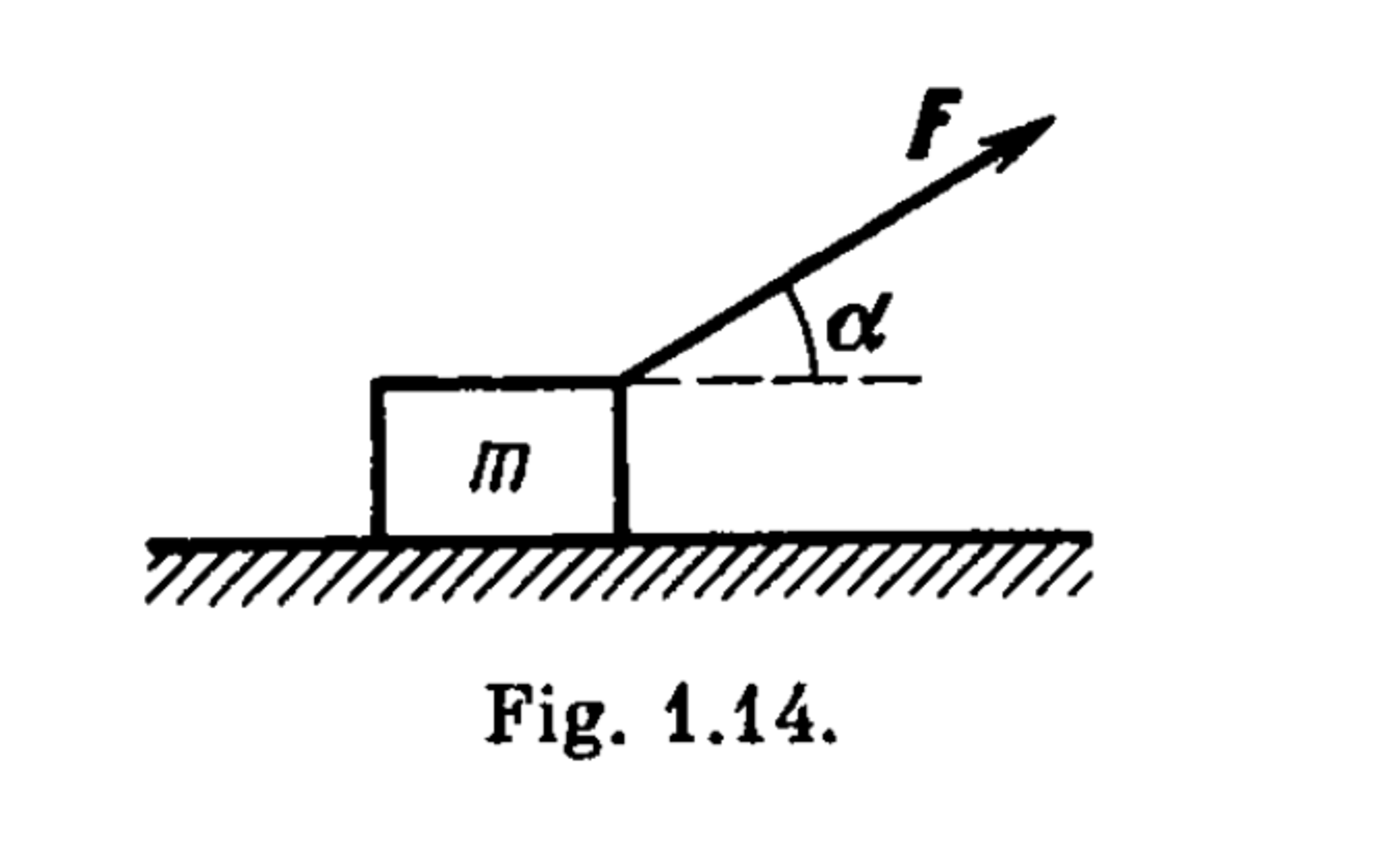Irodov problem; ODE solving practice
Difficulty: Not hard. It's pretty easy conceptually; the only not-so-easy part is integrating for velocity
So, I kind of jumped late onto the Irodov bandwagon, and I decided to solve some problems today.
Here's the problem:
A bar of mass resting on a smooth horizontal plane starts moving due to the force of constant magnitude.

Note that in the diagram the angle is labelled as , but to not confuse you between and , I have given it as . While in one dimensional motion, the angle between the direction of this force and the horizontal varies as , where is a constant, and is the distance traversed by the bar from its initial position.
Find the velocity of the bar as a function of the angle .
The answer comes in the form:
Where and are co-prime positive integers. Type the value of into the answer box.
By the way, since Irodov's problem solutions are all over the internet, don't go around looking for them before you solve the problem. It'll only take 5 minutes to solve this one.
The answer is 5.
This section requires Javascript.
You are seeing this because something didn't load right. We suggest you, (a) try
refreshing the page, (b) enabling javascript if it is disabled on your browser and,
finally, (c)
loading the
non-javascript version of this page
. We're sorry about the hassle.
Write the basic equations
Vertical direction: N + 3 m g sin θ = m g
Horizontal direction: F = 3 m g cos θ
Which gives a x = 3 g cos θ Note that θ = a x
∫ 0 v v d v = 3 g ∫ 0 x cos ( a x ) d x
Integrating and substituting the limits gives: v 2 = 3 a 2 g sin ( a x )
v = 3 a 2 g sin θ